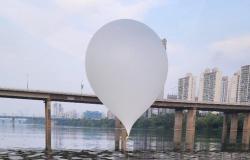He is thirty years old, from Cremona by birth but from Piacenza by adoption, and is the creator of Pilot, a network of one hundred nano telecommunications satellites that will remotely monitor telemedicine devices, oil pipelines, carbon dioxide absorbed by new plantings, degree of humidity in cultivated lands. His name is Alessandro Fanni and last year Forbes Italia included him in the one hundred entrepreneurs under 30 to be at the top of CShark, an all-Italian aerospace company based on the Stradone Farnese in Piacenza. Even the monthly Wall Street Italia (on newsstands this month) celebrates him because he is carrying out “one of the most interesting projects that the Italian aerospace industry could only imagine”.
When did your passion for technology begin?
«At fourteen, while I was attending the Industrial Technical Institute of Piacenza, I became passionate about physics. I took part in a contest promoted by the University of Parma where I came first with the project in which Gauss’ gas laws were demonstrated. At 16 I won an award for the best scholastic performance in the Emilia-Romagna region and was included in the “Cometa” research project for the valorization of excellence with which I had the opportunity to work in the Piacenza Energy and Environment Laboratory (Leap ) and in the Machine Tools and Production Systems Laboratory (Musp) in Piacenza.
In high school I started attending the Polytechnic University of Milan and then dropped out at 19 when I founded my own companies. Although I did not complete my studies, the University of Milan included me among its honorary students. We arrive at the year 2013 when with my CShark Solution I started developing software and also hardware and data center solutions. I have traveled the world: from Germany to England to the United States. I have attended numerous High Performance Computing conventions. In 2018 I created Pongo: a programmable artificial intelligence and a meta language capable of connecting to IoT (Internet of things) devices to remotely control them and capable of making any asset interconnectable. And with Pongo, I won the Milano Finanza 2019 award.”
What are you currently doing?
«We have already launched four nanosatellites, Pilot-1, into orbit, each weighing less than one kilogram. We did it in January 2022 from Cape Canaveral with a Falcon 9 rocket from Elon Musk’s SpaceX. These satellites are orbiting about 550 kilometers from Earth. And with CShark we are completing our first rocket, partly built in Canada, which will launch from South Korea by 2025. We want to have a constellation of 100 satellites that will communicate with the “Andromeda” devices: these devices will transmit, with Using our Perseus antennas, the data streams that will be processed by Pongo. And Pongo, through patented artificial intelligence, is capable of managing and programming a report algorithm and is also capable of making decisions.”
What applications?
«Let’s think about agriculture. There is a field where irrigation water needs to be rationalized. This will be done automatically based on the percentage of soil humidity, avoiding waste. Or, an oil pipeline where there are probes every 200 meters. With this system you will be able to comfortably read that data.”
But doesn’t the Internet already exist to be able to do this?
«The Internet does not offer global coverage but above all it has significant costs that we are able to reduce. CShark aims to create a network to transmit small data, let’s talk about sensor values, such as temperature and pressure. All you need is a small, secure and well-distributed bandwidth, which ensures low costs. Our Andromeda devices are battery powered with a lifespan of up to five years and do not need to be connected to the electricity mains.”
How far can these applications be pushed?
«Going further, CShark technology could revolutionize seismic prevention. Currently, seismographs are the main tools for locating earthquakes in real time. Andromeda devices, equipped with particle detectors, can detect the presence of Radon gas, a possible precursor to earthquakes and volcanic eruptions. Radon peak detection could indicate significant geological events and also warn when Radon concentrations are beyond limits, protecting human health.”





